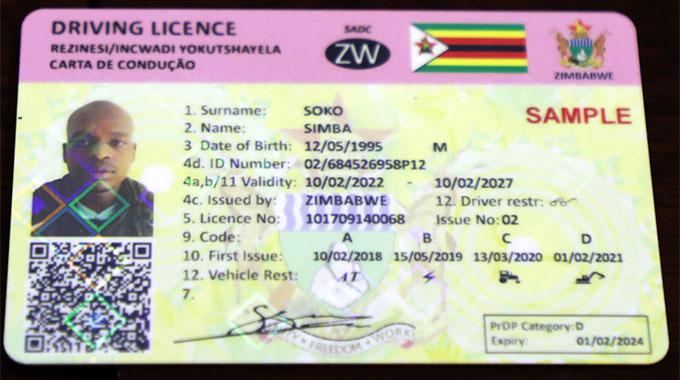The new driver’s licence system, which went into effect in Zimbabwe on June 19, 2023, brought with it various changes, including an increase in the age restriction and new vehicle licence categories.
The new laws require public transportation drivers to be at least 25 years old, and heavy vehicle licences are now classified according to truck weight, ranging from 3,500 kg to 56 tonnes.
The new system will gradually qualify professional drivers, and their licences will be renewed every two years, with eye and mental stability examinations required.
Furthermore, the licence is entirely consistent with SADC, COMESA, and EAC regulations, allowing local drivers to drive in 25 African nations.
The new approach also intends to combat fraudulent practises by some driving schools, which undercharge and avoid adequately training trainees, resulting in half-baked drivers.
The new laws require prospective drivers to pass particular exams for the cars they wish to drive, and codes will be based on gross vehicle mass (GVM) rather than nett vehicle mass (NVM).
Furthermore, the new plastic licences will be granted within seven working days, with the metal disc being phased out in the future.
The Ministry of Transport and Infrastructural Development confirmed that drivers who currently have a driver’s licence will be converted in accordance with the new rules, and that conversion will not involve real road tests but rather an upgrade of biometrics and medical examinations.
Below are excerpts from the Ministry of Transport and Infrastructural Development clarifying to The Sunday Mail Society some of the issues pertaining to the new driver’s licence system.
Q: What strategy will be used to convert metal licence holders?
A: Drivers who are already in possession of a driver’s licence will be converted as per new codes. Automatically, these will be based on the old system, where an individual with a Class 2 driver’s licence can drive a 56-tonne articulated truck. For those new and aspiring drivers, these will be tested specifically for the vehicles they intend to drive. Categories or codes will be based on gross vehicle mass (GVM), as opposed to net vehicle mass (NVM).
Basically, this means the classes that we currently have are going to be converted to 13 codes. In the conversion, drivers are not going back for actual road tests but, rather, for upgrading of biometrics and medical tests, including ones on eyes, after every five years.
Q: According to the new system, one ought to have a cumulative 10 years of driving experience before one can become a public transport driver. Does this mean we will not have public transport drivers below 26 years of age, and does this imply youthful drivers were responsible for the road carnage involving public transport?
A: Not necessarily. An individual with the B code, formerly Class 4, and is 18 years old and above, can drive a C1 category vehicle after a year. It is important to note that the year one manages to acquire a Class B driver’s licence determines the year they can acquire or are eligible for Class C. The five-year experience is still required regardless of the age of the driver.
However, to proceed to the Class C category, they have to wait for five years. The age issue is prescribed in the Road Traffic Act 13:11, Section 7 (1) (C). The age issue is a SADC, COMESA, EAC and the Tripartite Transport and Transit Facilitation Programme requirement, which Zimbabwe has to comply with as a member.
Q: Take us through what happens after the expiry of a licence.
A: At the expiry of a driver’s licence, the holder is required to apply for a renewal. The renewal process does not entail a practical driving test.
The applicant will be required to undergo a physical medical examination, including vision test, and upgrading of biometrics. The objective is to ensure the holder is still physically, mentally and visually fit so that the ability to drive is not compromised. Zimbabwe is simply adopting SADC standards and is not doing this alone.
Professional driver’s permit categories
◆ Code G: For goods-carrying vehicles with a GVM exceeding 3 500kg. The applicable minimum age for this category is 18 years.
◆ Code P: For passenger vehicles with a seating capacity of more than eight. The applicable minimum age for this category is 25 years.
◆ Code D: For dangerous goods-carrying vehicles that transport hazardous goods. The applicable minimum age for this category is 25 years.
All professional driver’s permits will be renewable after every two years. The drivers will be required to go for an eye test to assess vision and the ability to focus on objects and discern them.
Similarly, the driver’s biometrics will also be periodically updated in the system. Other drivers outside the professional drivers’ category will also undergo eye tests and updating of their biometric records after every five years.
ZiMetro News

For comments, Feedback and Opinions do get in touch with our editor on WhatsApp: +44 7949 297606.








































